Advertisement
Guidelines to reduce blindness risk not always followed

The risk of blindness from the drug hydroxychloroquine is well known. The drug is commonly used to treat rheumatoid arthritis and lupus erythematosus, and as an antimalarial medicine. Updated guidelines to minimize risk have been in place since 2011, but Cleveland Clinic researchers find many ophthalmic practices have yet to adapt to these guidelines. They also propose a novel solution.
Advertisement
Cleveland Clinic is a non-profit academic medical center. Advertising on our site helps support our mission. We do not endorse non-Cleveland Clinic products or services. Policy

Use of hydroxychloroquine is contraindicated in the presence of retinal or visual field changes, and indeed, hydroxychloroquine retinopathy is a well-described, long-term potential side effect. The drug can cause permanent vision loss through development of bilateral bull’s eye maculopathy.
In hopes of avoiding or minimizing this irrevocable central blindness, the American Academy of Ophthalmology (AAO) in 2011 issued revised guidelines to screen for hydroxychloroquine retinal toxicity.
A new study from Cleveland Clinic by ophthalmology resident Vishal Parikh, MD, medical student Adrian Au, et al., reports that overall adherence to the guidelines has been lower than expected.
It cites a study by Nika et al., which found that a third of high-risk patients did not receive appropriate diagnostic testing, and another study by Browning, which found poor documentation of patient height, weight and dosage information. Authors of Cleveland Clinic’s study say that these findings highlight the difficulty of determining the true rate of hydroxychloroquine toxicity.
Cleveland Clinic researchers examined clinician practice patterns in hydroxychloroquine screening in the institution’s large, multispecialty ophthalmology practice. Researchers investigated, among other things, whether differences in eye care specialization affected the choice of screening test, and whether that in turn correlates with compliance with screening guidelines.
The historical cohort study reviewed 756 patients at Cleveland Clinic’s Cole Eye Institute who had listed hydroxychloroquine as an active medication in the electronic medical record.
The study covers the period between March 11, 2011 (one month after the publication of AAO’s revised guidelines), and Sept. 18, 2014. Exclusion criteria included insufficient records and the use of hydroxychloroquine as malarial prophylaxis. Of the 756 patients, 735 had initial screening encounters and 559 underwent subsequent follow-up screening exams within the evaluation period.
Screening tests were stratified by ophthalmic subspecialty. Guidelines define proper screening as one subjective test – the Humphrey visual field (HVF) – and one of three objective tests: spectral domain optical coherence tomography (SD-OCT), fundus autofluorescence (FAF) or multifocal electroretinography (mfERG).
Cumulative dosing was calculated based on available information concerning years of therapy and total daily dosage. The calculation assumed 100 percent adherence and no breaks in treatment.
Adherence to guidelines was determined by categorizing screening practices one of three ways:
Advertisement
According to the study, a clinical diagnosis of hydroxychloroquine toxicity was made based on history, parafoveal attenuation or loss of the ellipsoid zone on SD-OCT, parafoveal areas of abnormal hyper-autofluorescence on FAF, or fundoscopic examination demonstrating concentric or central macular retinal pigmentary epithelial changes. These findings were correlated with functional testing via static perimetry testing (HVF).
The study’s population of 756 patients had a mean age of 56 years, and 661 (87.4 percent) were female. A majority were diagnosed with rheumatoid arthritis – 281 (37.2 percent) – or with systemic lupus erythematosus – 253 (33.5 percent). The mean duration of treatment was 6.3 years (range 0-46.1 years) with 354 (46.8 percent) having received hydroxychloroquine treatment for five or more years.
There were a total of 50 providers (38 MDs and 12 ODs) performing screening examinations, and optometrists were the single largest group at 24 percent.
The most common screening tests included SD-OCT (56.6 percent), 10-2 HVF (55 percent), and Amsler grid (40 percent). Of the 735 initial screenings, 341 patients (46.4 percent) were found to have been appropriately screened, 204 (27.8 percent) were under-screened, and 190 (25.9 percent) were inappropriately screened.
Of those who presented solely for screening (506), 307 (54.8 percent) were appropriately screened, 144 (25.7 percent) were under-screened and 109 (19.5 percent) were inappropriately screened. These findings were consistent with those reported by Nika et al. and Browning.
Advertisement
The study suggests that lower than expected adherence to the guidelines is likely multifactorial. There could have been a lack of awareness to the (then) new guidelines. There could also have been limited access to newer testing modalities, limited clinical decision support tools to identify patients as being on hydroxychloroquine and even workflow inefficiencies. And, there may have been specialty-specific preference for certain screening modalities.
In encounters with patients who presented for hydroxychloroquine screening, glaucoma and cornea subspecialists provided the highest adherence to screening guidelines (72 percent and 70.4 percent, respectively) followed by retina (67.9 percent), comprehensive (42.7 percent), pediatrics (50 percent) and oncology (50 percent).
“The import of all the recent literature and our current study indicates that we are failing to provide patients proper hydroxychloroquine screening, which is of particular concern given the rising detection rate of toxicity,” the study says. “Identifying targeted ways of reducing poor compliance may improve how we approach and successfully detect early onset hydroxychloroquine retinopathy in the future.”
One suggestion from researchers is to increase meaningful use of the electronic medical records system to help improve screening practice patterns.
In a subsequent abstract, so recently completed it has not been published, Parikh, Au et al., examined whether adding a best practices alert (BPA) in the electronic medical record would improve the institution’s ability to screen patients for hydroxychloroquine retinopathy. This change was made shortly after distribution of the above study, and indeed it has improved screening rates.
The observational, retrospective study described in the abstract examined 84 hydroxychloroquine screening encounters, which occurred from August through December 2015, after the implementation of the BPA. Screenings were classified as ‘appropriate’ when an objective (SD-OCT, mfERG, FAF) and a subjective (HVF) test were performed, and ‘inappropriate’ if neither 10-2HVF nor objective testing was performed.
Of the 84 screening encounters, 57 (67.9 percent) were appropriately screened, 17 (20.2 percent) were under-screened, and 2 (2.4 percent) were inappropriately screened. This was in contrast to the previously described screening adherence at the same practice where 54.8 percent were appropriately screened, 25.7 percent were under-screened, and 19.5 percent were inappropriately screened. The preferred testing modalities were 10-2 HVF and SD-OCT at 77.6 percent and 93.4 percent, respectively.
“Screening for HCQ retinopathy improved with the implementation of a best practice alert as appropriate screening improved from 55 to 67.9 percent, while those inappropriately screened decreased from 19.5 to 2 percent,” the abstract concluded.
Advertisement
Advertisement
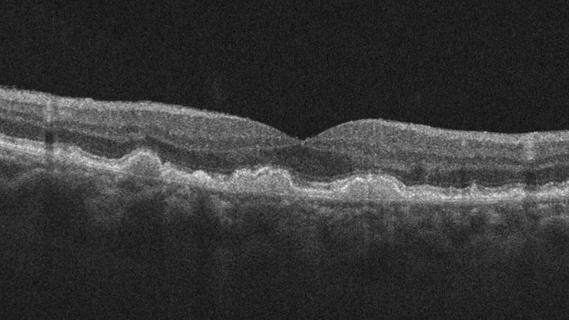
Early data show risk is 73% higher in patients with lupus, 40% higher in patients with rheumatoid arthritis
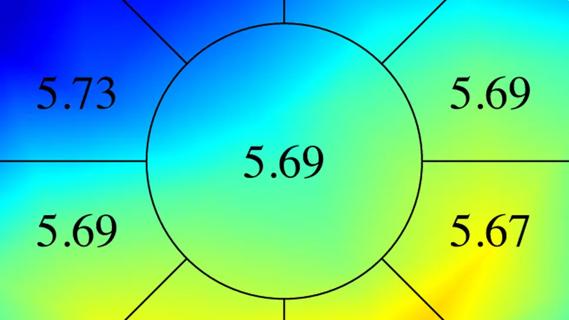
Identifies weak spots in the cornea before shape change occurs

Researchers to study retinal regeneration in zebrafish with new grant from National Eye Institute

30% of references generated by ChatGPT don’t exist, according to one study
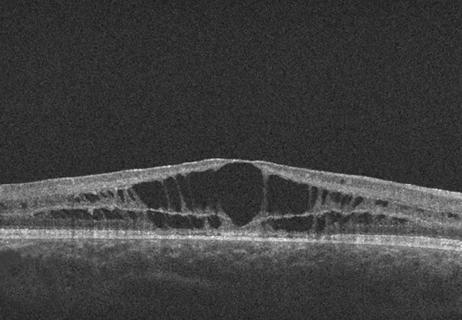
Study followed patients an average of eight years
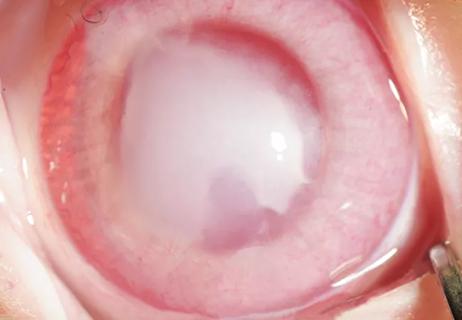
Studies indicate dramatic results when used topically with or without corticosteroids
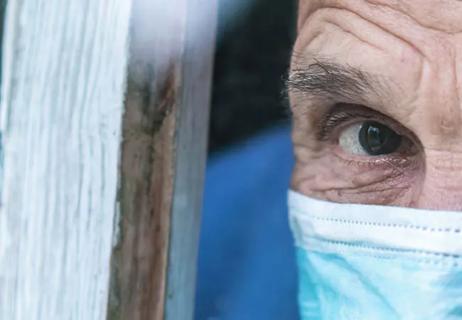
53% of participants didn’t need anti-VEGF for six months or longer
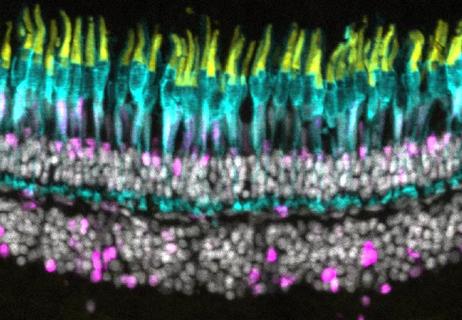
Notch pathway inhibition preserves retinal neurons and promotes regrowth in zebrafish